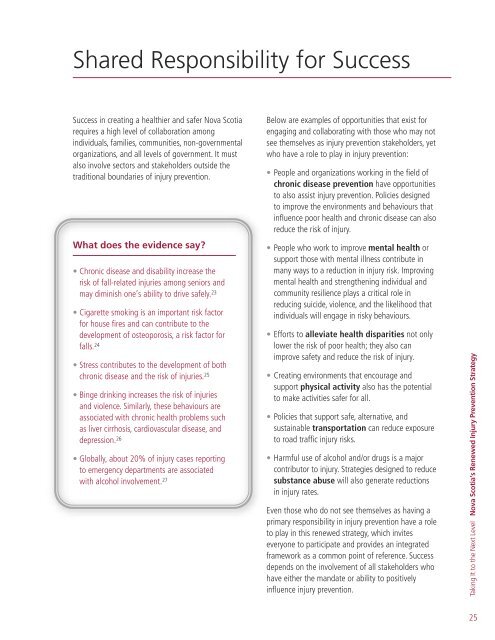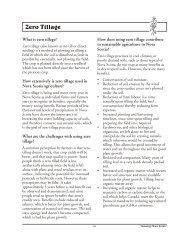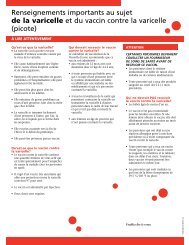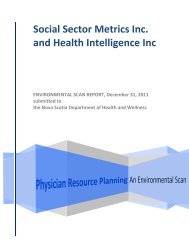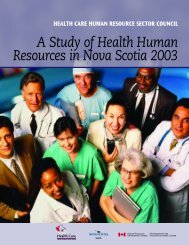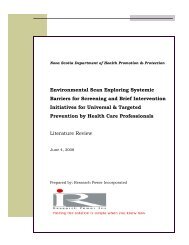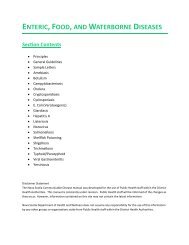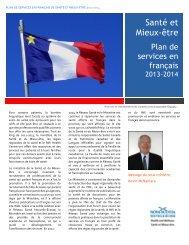Nova Scotia's Renewed Injury Prevention Strategy - Government of ...
Nova Scotia's Renewed Injury Prevention Strategy - Government of ...
Nova Scotia's Renewed Injury Prevention Strategy - Government of ...
- No tags were found...
Create successful ePaper yourself
Turn your PDF publications into a flip-book with our unique Google optimized e-Paper software.
Shared Responsibility for SuccessSuccess in creating a healthier and safer <strong>Nova</strong> Scotiarequires a high level <strong>of</strong> collaboration amongindividuals, families, communities, non-governmentalorganizations, and all levels <strong>of</strong> government. It mustalso involve sectors and stakeholders outside thetraditional boundaries <strong>of</strong> injury prevention.What does the evidence say?• Chronic disease and disability increase therisk <strong>of</strong> fall-related injuries among seniors andmay diminish one’s ability to drive safely. 23• Cigarette smoking is an important risk factorfor house fires and can contribute to thedevelopment <strong>of</strong> osteoporosis, a risk factor forfalls. 24• Stress contributes to the development <strong>of</strong> bothchronic disease and the risk <strong>of</strong> injuries. 25• Binge drinking increases the risk <strong>of</strong> injuriesand violence. Similarly, these behaviours areassociated with chronic health problems suchas liver cirrhosis, cardiovascular disease, anddepression. 26• Globally, about 20% <strong>of</strong> injury cases reportingto emergency departments are associatedwith alcohol involvement. 27Below are examples <strong>of</strong> opportunities that exist forengaging and collaborating with those who may notsee themselves as injury prevention stakeholders, yetwho have a role to play in injury prevention:• People and organizations working in the field <strong>of</strong>chronic disease prevention have opportunitiesto also assist injury prevention. Policies designedto improve the environments and behaviours thatinfluence poor health and chronic disease can alsoreduce the risk <strong>of</strong> injury.• People who work to improve mental health orsupport those with mental illness contribute inmany ways to a reduction in injury risk. Improvingmental health and strengthening individual andcommunity resilience plays a critical role inreducing suicide, violence, and the likelihood thatindividuals will engage in risky behaviours.• Efforts to alleviate health disparities not onlylower the risk <strong>of</strong> poor health; they also canimprove safety and reduce the risk <strong>of</strong> injury.• Creating environments that encourage andsupport physical activity also has the potentialto make activities safer for all.• Policies that support safe, alternative, andsustainable transportation can reduce exposureto road traffic injury risks.• Harmful use <strong>of</strong> alcohol and/or drugs is a majorcontributor to injury. Strategies designed to reducesubstance abuse will also generate reductionsin injury rates.Even those who do not see themselves as having aprimary responsibility in injury prevention have a roleto play in this renewed strategy, which inviteseveryone to participate and provides an integratedframework as a common point <strong>of</strong> reference. Successdepends on the involvement <strong>of</strong> all stakeholders whohave either the mandate or ability to positivelyinfluence injury prevention.Taking It to the Next Level <strong>Nova</strong> Scotia’s <strong>Renewed</strong> <strong>Injury</strong> <strong>Prevention</strong> <strong>Strategy</strong>25


